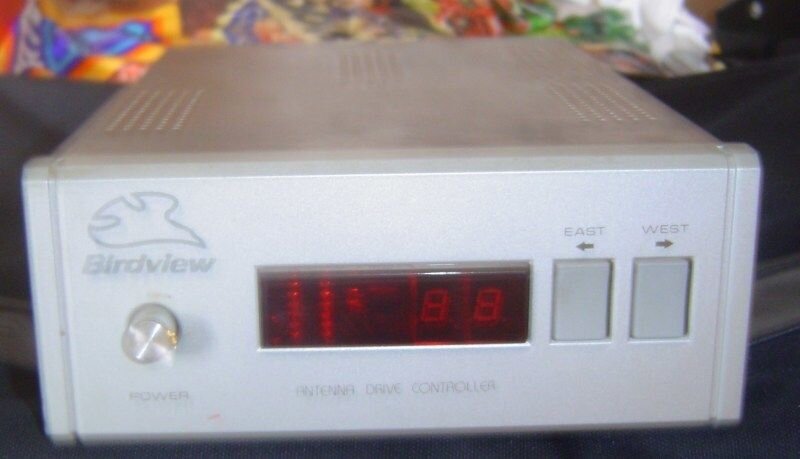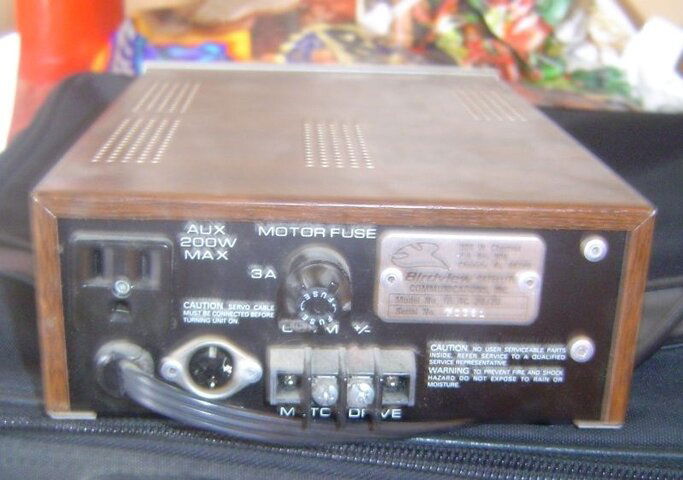I forgot to tell you guys that the guy I got the Birdview called me a couple of weeks later, and asked me to come by and pick up the receivers. He had two for two different tv sets. The receivers are pretty much worthless. Nothing even on the inside that's useable even for latter day analog receivers.
The other thing I picked up was the dish mover. It is a separate box with 36V outputs on the back and buttons on the front. I guess it got it's signal from the remotes which I have, but I can think of all kinds of uses for this little jewel. From setting up dishes to testing actuator arms. All I need now is a sat identifying meter to hook inline, and my job would get a whole lot easier.
Here are the pics:


What else can I do with this box? I have the potentiometer that that was on the motor pinion gear shaft which I am sure it used for knowing how far the dish moved.
Thanks,
Fred
The other thing I picked up was the dish mover. It is a separate box with 36V outputs on the back and buttons on the front. I guess it got it's signal from the remotes which I have, but I can think of all kinds of uses for this little jewel. From setting up dishes to testing actuator arms. All I need now is a sat identifying meter to hook inline, and my job would get a whole lot easier.
Here are the pics:


What else can I do with this box? I have the potentiometer that that was on the motor pinion gear shaft which I am sure it used for knowing how far the dish moved.
Thanks,
Fred

